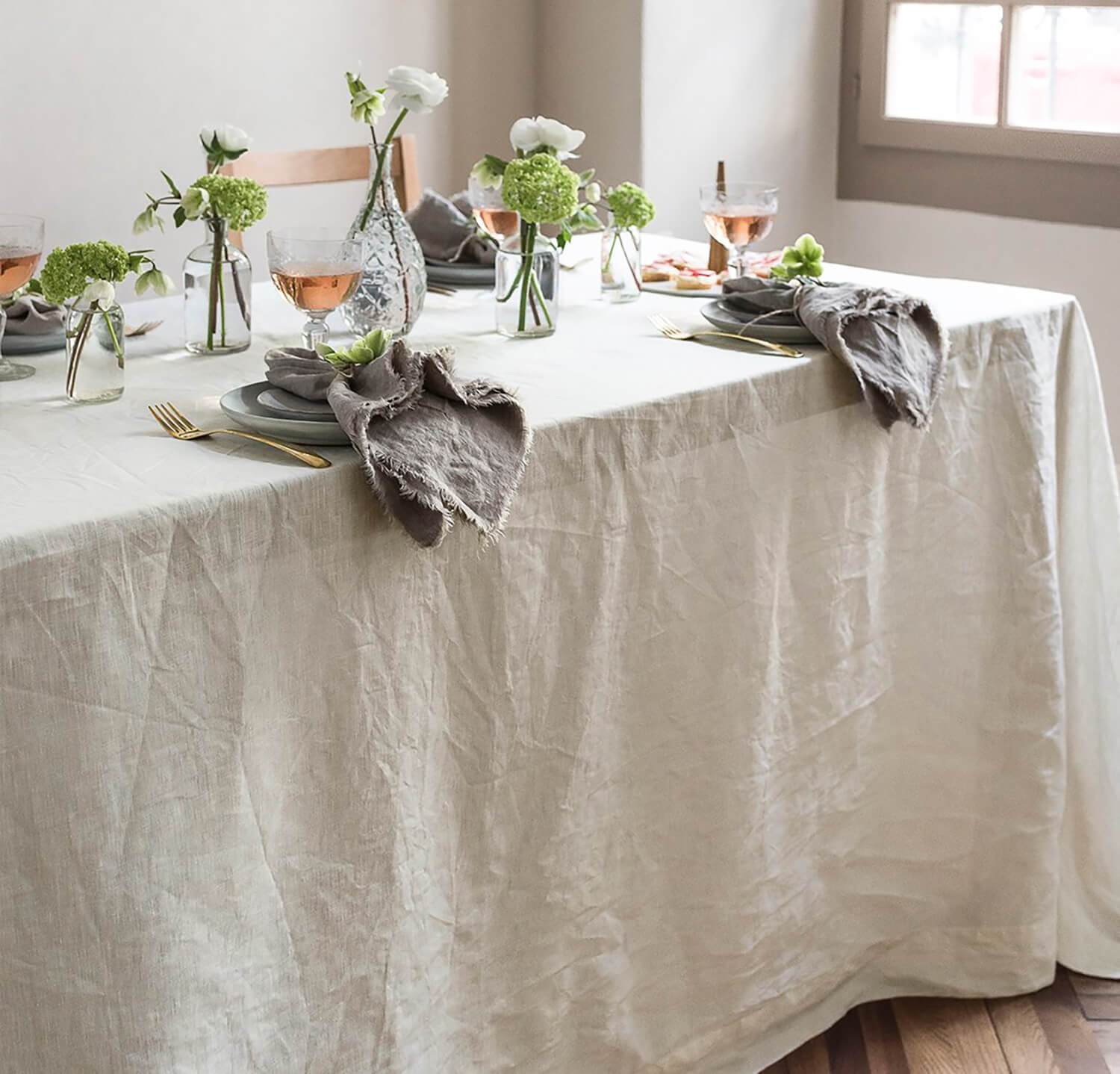Classy Table Cloths: Perfect Choices for every single Occasion
Classy Table Cloths: Perfect Choices for every single Occasion
Blog Article
Linen Material Technologies: Exploring Modern Trends and Creative Applications in Design and Fabric Industry
From lasting production methods to cutting-edge weaving modern technologies, the advancement of bed linen is reshaping the landscape of the textile sector. As we dive right into the realms of creative design applications and the appearance of linen blends and hybrid textiles, a new phase unravels in which bed linen's duty in future textile innovations takes center phase.
Sustainable Practices in Bed Linen Production
Lasting techniques in linen production have actually ended up being progressively vital in the fabric industry's initiatives to lessen ecological impact and promote moral sourcing approaches. Bed linen, a natural fiber originated from the flax plant, provides a range of advantages such as breathability, biodegradability, and toughness. Nonetheless, conventional approaches of linen manufacturing can involve considerable water consumption, chemical use, and energy-intensive procedures.
To address these difficulties, several textile suppliers are embracing sustainable methods throughout the bed linen production procedure. This consists of sourcing flax from organic farms that stay clear of dangerous pesticides and chemicals, applying water-efficient retting strategies to essence fibers from the flax stalks, and making use of eco-friendly dyes and surfaces. Additionally, some firms are spending in renewable resource resources to power their manufacturing facilities and decreasing waste via recycling and upcycling initiatives.
Technological Innovations in Linen Weaving
With the growing emphasis on sustainable methods in bed linen manufacturing, the fabric industry is currently observing a surge in technological developments especially targeted at revolutionizing the art of linen weaving. These developments are reshaping the means bed linen textiles are produced, offering enhanced effectiveness, high quality, and imagination in weaving strategies.
One of the essential technological developments in linen weaving is the integration of computerized looms. These sophisticated looms are furnished with software application that permits complicated and detailed layouts to be woven with accuracy. By digitizing the weaving process, producers can accomplish better uniformity and precision in their bed linen textiles.
In addition, innovations in thread spinning modern technology have actually enabled the manufacturing of finer and more resilient linen threads - table cloths. This leads to softer and smoother linen fabrics that preserve their high quality even after numerous usages and laundries
Additionally, the growth of eco-friendly dyeing procedures and surfaces for linen textiles is getting traction. These lasting methods not only lower the ecological impact yet additionally provide to the boosting consumer need for fairly produced fabrics.
Creative Design Applications for Bed Linen
Cutting-edge creative approaches are progressively forming the creative design applications for linen in the fabric sector. Linen's natural visual appeal and capability to mix with various other fabrics make it a preferred selection for creating distinct garments and devices that provide to the ecologically conscious customer.
Furthermore, developers are trying out linen in home decoration, using its resilient and breathable nature to craft elegant home furnishings such as drapes, bed linens, and upholstery. The texture and drape of linen bring a sense of elegance and convenience to indoor spaces, including a touch of elegance to modern homes.

Bed Linen Blends and Crossbreed Fabrics

Crossbreed fabrics, on the various other hand, take the idea of blending an action additionally by incorporating added components such as metal threads, recycled products, or conductive fibers. These ingenious textiles not just expand the layout opportunities but additionally introduce useful elements like conductivity, antimicrobial homes, or enhanced longevity. Hybrid fabrics are progressively being utilized in numerous industries, consisting of fashion, indoor design, and technical fabrics, where the need for multifunctional materials gets on the rise.
Bed linen's Duty in Future Textile Innovations

In the realm of future fabric technologies, linen is expected to be a crucial gamer in the growth of advanced functional materials. Scientists and developers are checking out methods to boost bed linen's inherent qualities with technological improvements, such as including clever fabrics, nanotechnology, and efficiency coatings. These innovations aim to raise bed linen's efficiency qualities, making it ideal for a more comprehensive array of applications, from activewear to safety apparel.
In addition, the mix of bed linen with various other all-natural or artificial fibers opens up limitless opportunities for developing unique fabrics with special buildings and functionalities. By leveraging bed view linen's features and discovering cutting-edge blends, the fabric market is poised to introduce exciting developments that accommodate advancing consumer needs and sustainability requirements.
Conclusion
To conclude, the expedition of sustainable methods, technological advancements, imaginative style applications, linen blends, and its role in future fabric advancements highlight the continual development of linen textile in the contemporary design and fabric market. With a focus on innovation and creativity, the convenience and green nature of bed linen make it an important material for developers and producers alike, paving the method for additional advancements and advancements in the area of textiles.
As we dig into the worlds of creative style applications and the development of bed linen blends and hybrid textiles, a new phase unfolds in which bed linen's role in future textile innovations takes center phase.
Exploring the blend of linen with various other textiles has led to the appearance of innovative blends and crossbreed fabrics in the contemporary textile sector. Linen blends use an unique combination of the features of linen with those of other fibers, resulting in textiles that have improved residential or commercial properties such as raised resilience, boosted draping, and reduced wrinkling.The evolution of bed linen blends and crossbreed textiles has actually set the phase for Linen to play a pivotal role in driving future fabric innovations.In the realm of future textile advancements, bed linen is expected to be an essential gamer in the growth of innovative functional fabrics.
Report this page